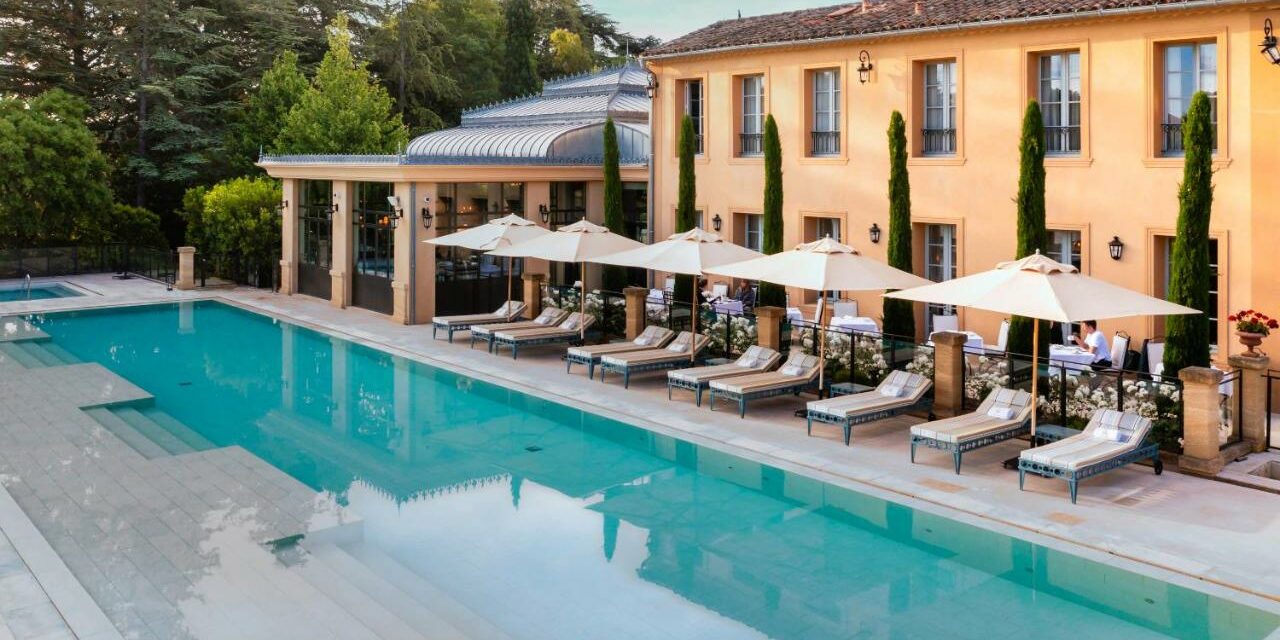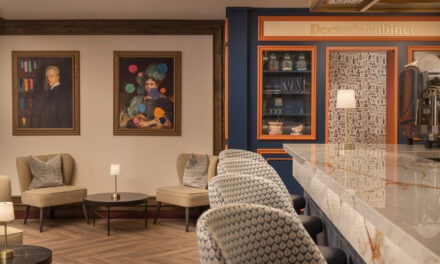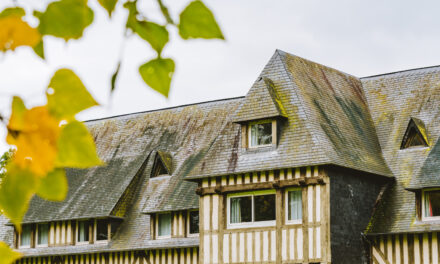By Sylvie Peron – © Villa Saint-Ange
A serene setting nestled in vast scented gardens, only a stone’s throw away from bustling Cours Mirabeau, Villa Saint-Ange offers 5* hotel luxury, embodying the most refined French lifestyle.
On a late autumn afternoon, under sharp blue skies and warm sun rays, driving up the narrow street along the Saint-Pierre cemetery, I had the distinct feeling that heaven was nearby. Through a beautifully crafted wroughtiron gate guarded by two stone lions, a haven of greenery unveiled, complete with sculptures of cherubs, fountains and the 18e century Bastide, renovated and extended.
The Hotel’s 35 rooms and suites are gracefully disseminated throughout the park around a huge swimming pool. Several of them are housed in the main mansion and some boast their own private terrace. To relax in the shade with the whisper of hidden fountains and the songs of chirping birds for the sole soundtrack is conducive to meditation. The villa is decorated in exquisite taste, with an abundance of antique furniture. Precious screens and rugs adorn the rooms enhanced by gorgeous wrap-around wallpapers illustrating tales of the Far East. The overall atmosphere is one of pure refinement.
The tale of the Villa Saint-Ange began well before the French Revolution in 1789. In those days the property comprised a chapel and a convent surrounded by a large park. A mansion was erected towards the end of the 18th century by a well-off local family. Then in 2017, Jean-Brice Garella, son of a notorious Aixois designer, acquired the estate. A man of passion and refined taste, he set out to transform the residence into a stylish hotel, eager to convey his feeling for elegance to discerning guests. Supervising the tiniest details on the 3 year-long worksites, even choosing the moldings adorning the restaurant ceilings, he did the rounds of antique-dealers in search of real gems.
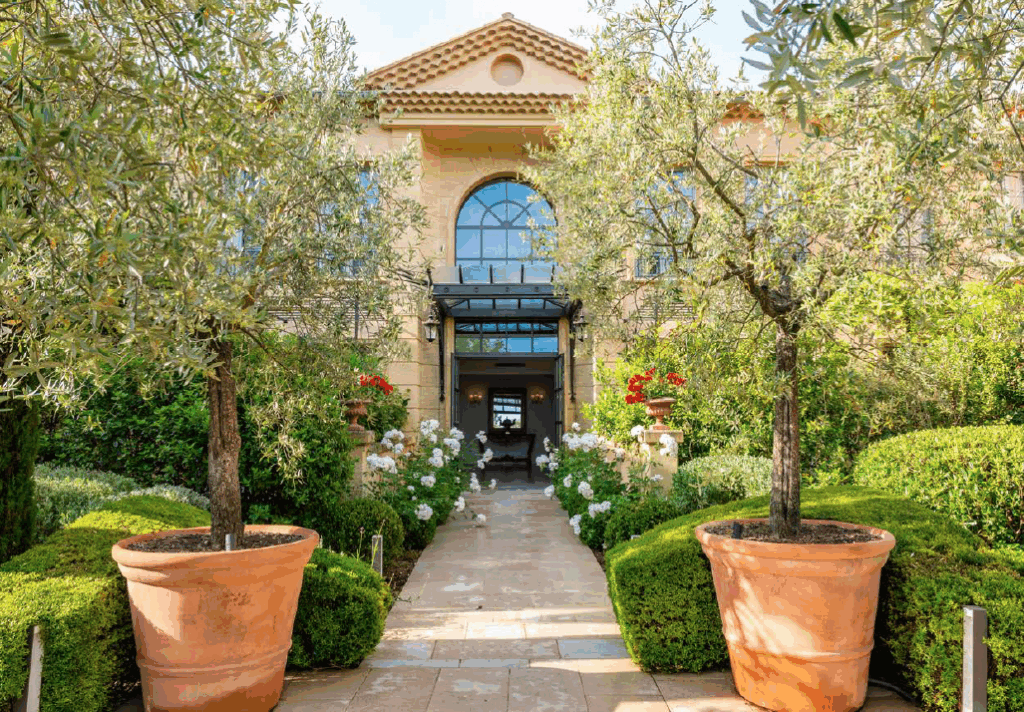
As a discriminating fan of arts and history, he trusted his own philosophy that high-end hotels should tell a tale, blending desires and emotions. «Some places are like ideas,» writes the entrepreneur in a booklet narrating his endeavor. «These ideas are intuitions, initially, you experience them without really knowing what they are… The search for a truly exceptional place can take weeks, months, or even years…. These places are not easy to find. They are rebellious and wild, like all precious things which are reluctant to let themselves be confined by reality. And then, after some time, (and occasionally after a very long time), just when you’re occupied with something else, they appear from nowhere, with total clarity. We are not the ones who find these magical places, they reveal themselves to us.»
Upon discovering this forgotten site, a villa could be made out, hidden by wisteria. «It wasn’t in ruins, but its roof was covered with ivy and the putlog holes in the walls had become a refuge for an army of bumblebees working tirelessly to pollinate the masses of thyme at the foot of the decrepit external walls in shades of yellow ochre which trapped the heat of the day. A sundial marked the inexorable passage of time in the golden sunshine… Everything was faded and damaged; yet despite time’s withering attacks, this simple and aristocratic building, with its stone frame and decorative tiles, had retained its grandeur – as if time had preserved the splendors of an ancient world…. I had just discovered a place which existed only in my wildest dreams.»
Later, during a business trip to Rome as he was walking across the Tiber to visit the Castel Sant’Angelo, Garella received a phone call confirming the property’s sale. Leaning against the parapet, he knew he had found the name: Villa Saint-Ange sounded perfect!
As work was progressing at the Villa under the guidance of Bâtiments de France experts and teams of craftsmen, artisans, masons, roofers, gardeners and the like, Garella was handed a rare painting by an antique dealer. «I’d like you to meet Adélaïde de Saint-Ange, the property’s former owner»
The portrait represented the lady-in-waiting of Pauline Borghese, Napoleon’s favorite sister, and her most intimate confidante. The stunning coincidence had to be a sign for things to be. Her life story, as told by Garella, is tragically romantic.
But to this day he writes, «Nothing has changed, from the entrance to the property’s elegant and symmetrical façade with a central door below an ornate lintel and a balcony, to the building’s interior, home to all the typical features of an Aix-en-Provence town house in the 19th century, including an entrance hall and a wide ceremonial staircase decorated with a wroughtiron banister and family portraits. It was Adelaïde who transformed and decorated this house with the inherent good taste she had developed during her upbringing…. As humble workers of the present day, it’s this character that we have sought to restore.»
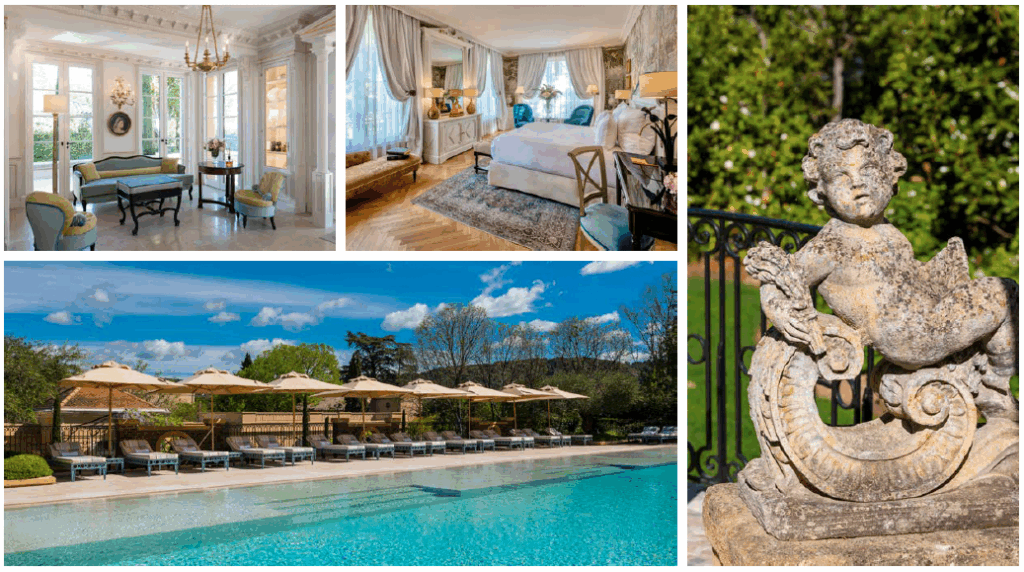
The impressive swimming pool, with its sleek lines, complements the aristocratic building. Next to the villa, the glass architecture of the restaurant offers a delightful foray into the late 19th century with a curved zinc roof, volutes, gilding and crystal chandeliers hanging from high molded ceilings. ‘Ama Terra’ restaurant’s late Second Empire atmosphere gives a pleasant feeling of stepping back in time.
Next summer, as native artist Paul Cézanne will be celebrated in a rare exhibit at nearby Musée Granet, staying at the Villa Saint-Ange promises to be an unforgettable experience.

